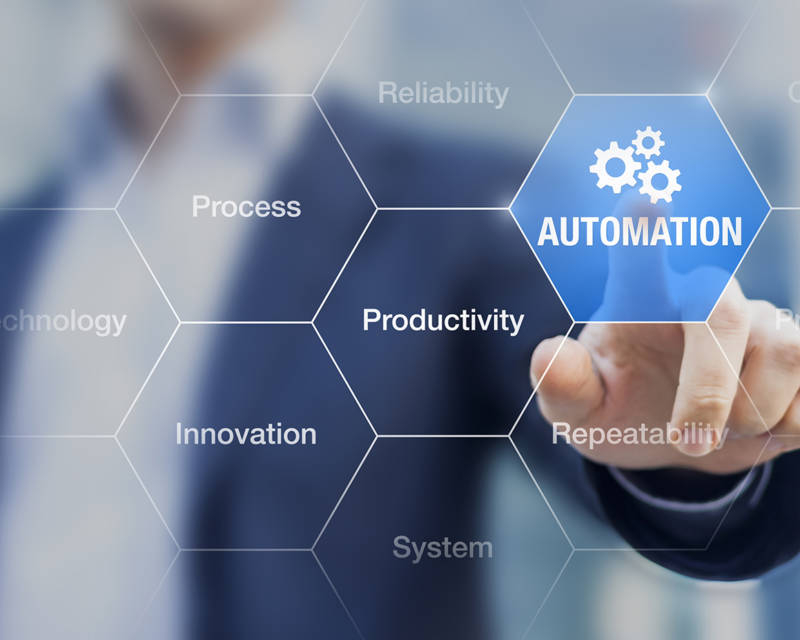The Future of Bespoke Automation
Automation is clearly a key component of the future, it already makes up a significant part of supply chains and factories today; from robotic X-ray machines in hospitals to pallet trucks, parking lots, baggage handling and even stage scenery automation within theatres. There is a rapid expansion happening in the automation industry, especially as bespoke vehicles can be created for businesses to leverage specific and measurable benefits through qualified consultation that doesn’t break the bank. Paul Rivers, Managing Director at Guidance Automation discusses what the future holds for automation, and how for businesses to gain the most benefit from these technologies, they must look to deploy a bespoke solution that aligns precisely with their processes, goals and workforce in order to fully reap the benefits.
The reality today
Although automation has been used in manufacturing since the 1970s, new advancements in this technology have expanded rapidly over time, including Robotics, Big Data, Machine Learning and Artificial Intelligence. These automated processes offer significant savings in time, cost, labour and can drastically improve efficiency for many industries.
Recent research reveals that the full impact of automation will be felt by the mid-2020’s, particularly in manufacturing, transportation and storage and wholesales and retail trade, with the range of jobs with high automation potential being 35-50% within these sectors by 2035. While few occupations are fully automatable, 60% of all occupations have at least 30% technically automatable activities, showcasing the potential for the deployment of automation into these processes.
In today’s day and age, the vast majority of automation is focused around moving goods around a warehouse, for instance pallets, heavy loads or small robotic vehicles moving boxes from aisles to a packing area. This automation frees up humans – who have many irreplaceable skills – from the laborious task of walking around all day and back and forth. It enables the whole process to become smoother and more efficient, by having that fleet of automated robotic vehicles to do the unskilled work such as collecting and dropping products at specific locations.
The next generation of automation
How can this be taken further though? If you think about putting your hand into a container, orienting your hand and fingers, grabbing the object whilst trying to work out what it is, without looking – could you rapidly do that potentially thousands of times a day? Could you work out at high speed how hard to hold it without causing damage? Then pull it out of the container and know if it needs to be delicately placed down or if it can be dropped without damage, while at the same time, considering the other objects which might already be in the container? This is the next generation of automation that can take place.
Robotic hands with a suite of sensors to replicate our vision, touch, dexterity, sound (we can tell if we are damaging something by sound too) is the future. The demand is already there and every year companies such as Amazon sponsor competitions to see if teams can pick a variety of parts, different shapes and sizes in order to chart industry progress in this area. To be successful will mean instant commercialisation.
As automated picking technology advances, with processing speeds improving all the time, humans will be able to move to the outside edges of the warehouse. There will no longer be a need for workers to be inside, and machines will replicate humans, freeing humans to become the maintenance and problem solvers.
Efficiency is always the focus and this will guide the next generation of automation. The most efficient systems have the fewest humans and are designed from the start of a new warehouse facility being constructed. Humans will move to handle only very specialist niche products, and aisles can be narrowed down to an absolute minimum, allowing a better utilisation of warehouse space. Stock locations can be better optimised to achieve higher flow rates, as data analysis can decide where items should be stored to speed up picking and packing processes. Furthermore, injuries will be reduced with a decrease in physical tasks for humans; and preventative maintenance will improve, with vehicles/robots able to signal when something isn’t functioning 100% and request maintenance before serious problems.
To realise this, there must be a phase of introducing the vehicles first, then following the beginning of their work, the performance can be analysed and perfected. It all combines with the Internet of Things and sensors sharing information to improve the efficiency of the process.
Even low labour economy countries still need automation for consistency. With automation, you won’t have to keep training the workers in various picking processes each time a new set of recruits arrive, you have consistency with every interaction. With this efficiency and consistency at the heart of the operation, waste can be eliminated, errors reduced – optimisations and lower operational costs become the focus.
Bespoke Solutions
Automation may not be the best route for every organisation, but by understanding your company goals and objectives, it’s easier to see whether and how automation will fit within your processes. As this technology becomes more widely available and sophisticated, more businesses feel obliged to adapt and transform their environments to stay competitive. However, this doesn’t have to be the case, and often, the results of a commercial system aren’t as successful as expected.
Every organisation is different and needs different automated machinery to meet their needs. Rather than having a one-size-fits-all-approach, by implementing bespoke automation in a way that is directed at the needs of both the business and customers, this solution offers a more fluid-workflow, with unique services and products that fit with these demands.
Built specifically for purpose, having custom-made solutions means that you are no longer compelled to compromise. Instead, it is made to match your business model, aiding problem solving while improving performance and efficiency. Furthermore, bespoke automation can be integrated into current applications, so service can continue as normal. As opposed to off-the-shelf solutions, this model is flexible and agile, as it can be modified throughout the development process.
Smart automation clearly has the potential to deliver great economic benefits, through augmenting the workforce, not simply replacing it. A collaborative approach between humans and machines allows for work to be carried out in perfect harmony. The future of automation is bright, provided industries work with experienced partners to develop bespoke solutions to match workforces and environments completely. The most effective partners will work with you to identify your real-world challenges and understand the nuances of production environments in order to map automation solutions that reflect your needs.
To find out more about how our autonomous mobile robots can move your business forward contact Guidance Automation today:
Call us on: +44 116 243 6250
Alternatively: Fill out the form on our contact page




